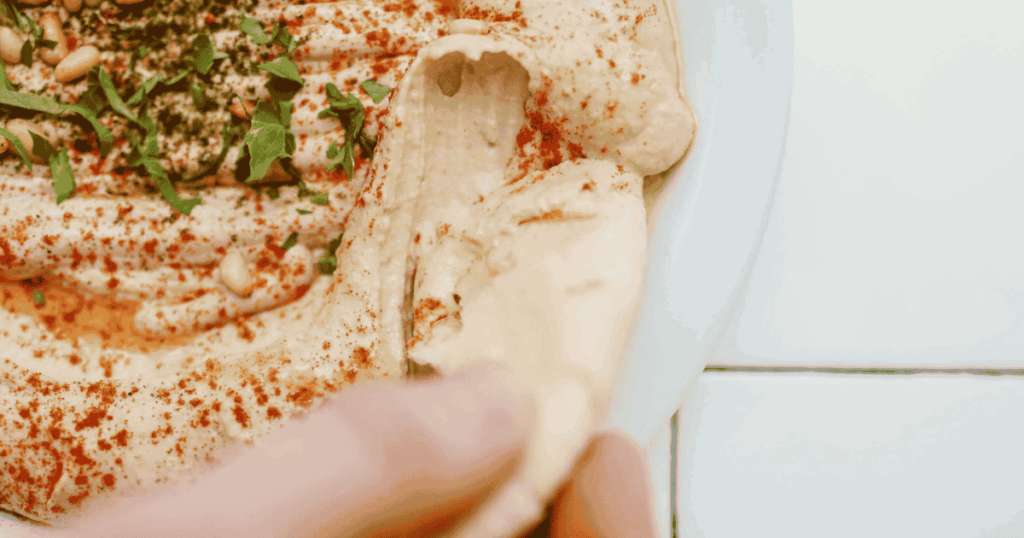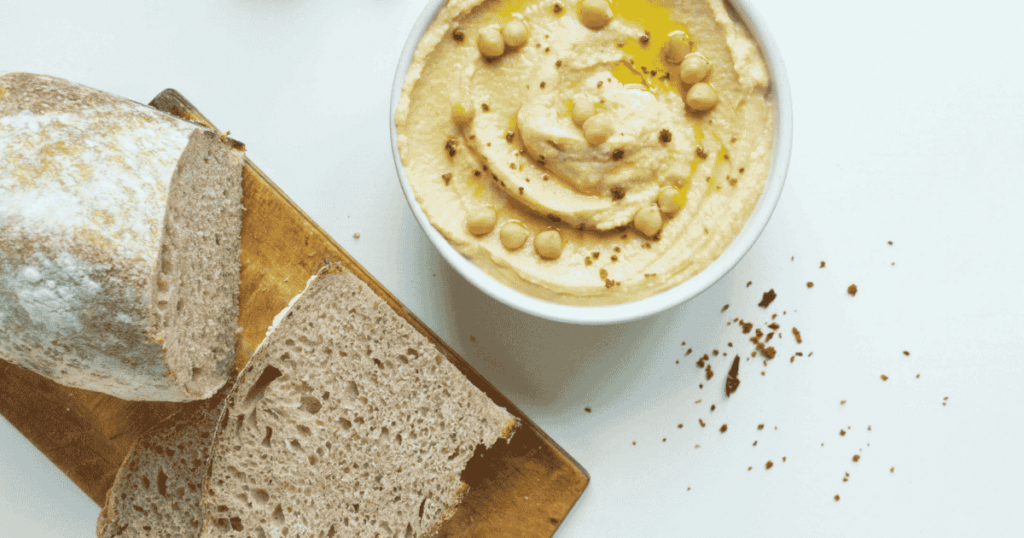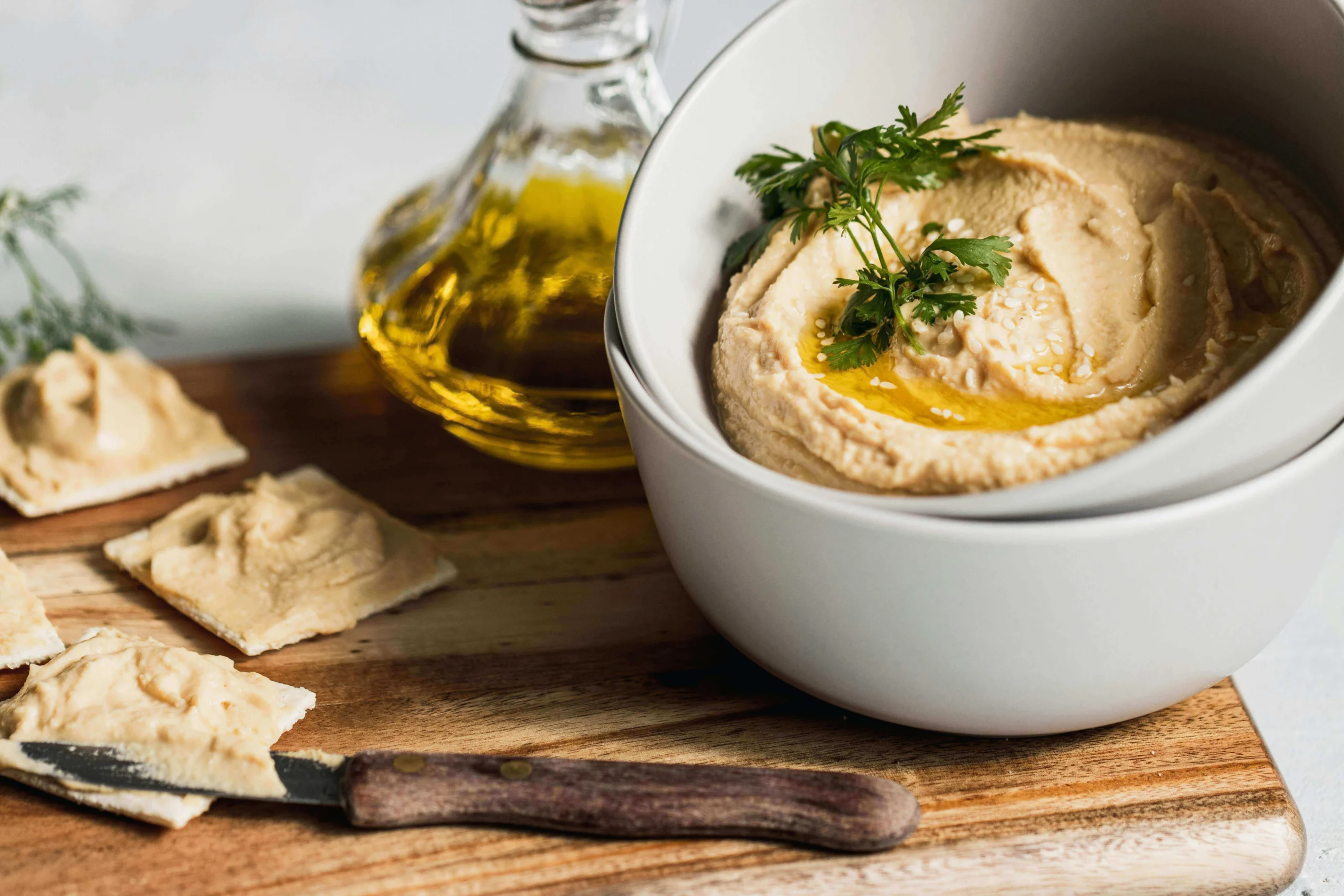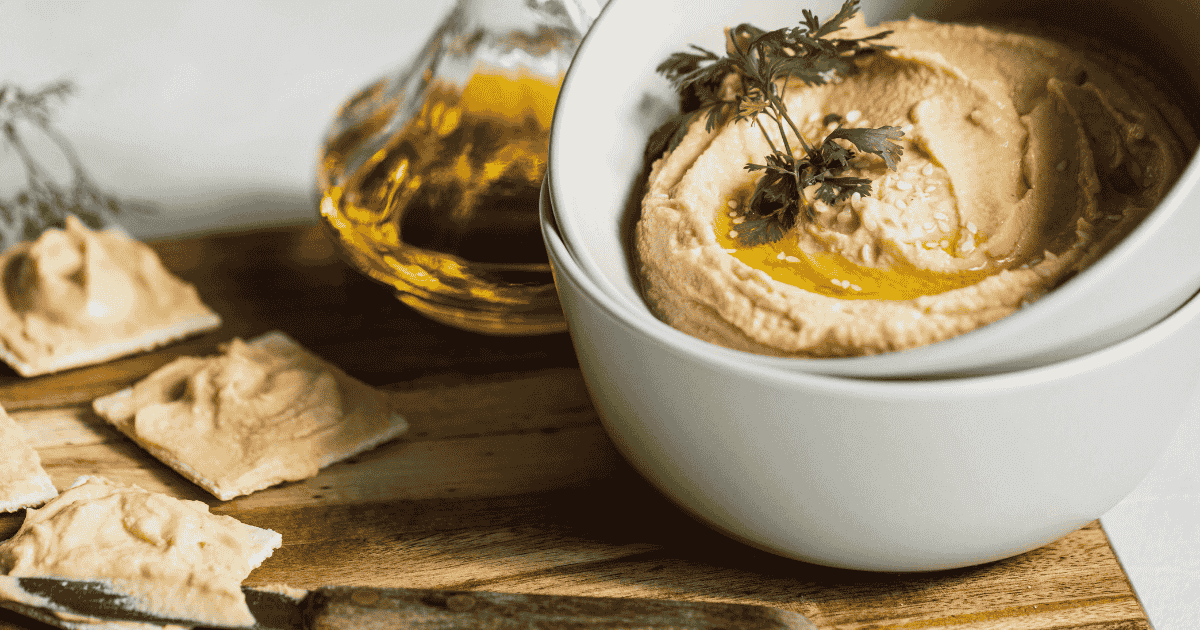Garlic hummus recipe without tahini offers a refreshing twist on the classic hummus dip, eliminating the need for tahini while still delivering a creamy, delicious texture. This variation allows the bold flavor of garlic to shine, creating a smooth and savory spread that is both simple and satisfying. Whether you’re a fan of hummus or a newcomer to this Mediterranean delight, this recipe is a game-changer. It’s perfect for those who prefer a tahini-free alternative or simply want to experience a more pronounced garlic flavor. Easy to make, bursting with flavor, and incredibly versatile, this hummus is bound to become a staple in your kitchen.
Table of Contents
Discover the magic of garlic hummus without tahini
Discover the magic of a garlic hummus recipe without tahini, a simple yet flavorful variation that elevates the traditional hummus experience. Without the typical richness of tahini, this recipe allows the pungent, aromatic essence of garlic to take center stage. The result is a lighter, fresher version of hummus that still delivers the creamy texture you love. The absence of tahini doesn’t compromise the depth of flavor; instead, it enhances the other ingredients, allowing each bite to be a perfect balance of savory, citrusy, and subtly earthy. This garlic hummus recipe without tahini offers a unique, irresistible twist on a classic favorite.
Why this recipe is the perfect addition to your kitchen repertoire
This garlic hummus recipe without tahini is the perfect addition to any kitchen repertoire, offering both simplicity and versatility. It requires minimal ingredients, yet delivers a rich, flavorful dip that complements a wide range of dishes. Whether you serve it with fresh vegetables, or pita, or use it as a sandwich spread, this hummus enhances any meal. Its effortless preparation makes it ideal for busy weeknights or impromptu gatherings. By eliminating tahini, this recipe is also more accessible to those with dietary restrictions or preferences, ensuring that everyone can enjoy its creamy, garlicky goodness without compromise.
The simplicity of making hummus at home without the hassle of tahini
Making hummus at home doesn’t have to be complicated. With a garlic hummus recipe without tahini, you can enjoy a smooth, flavorful dip without the extra step of incorporating tahini. This simplified approach removes the need for an ingredient that may be unfamiliar or hard to find, making the process faster and more accessible. The beauty of this recipe lies in its ease—blending chickpeas, garlic, olive oil, and lemon yields a deliciously creamy result in minutes. Whether you’re new to homemade hummus or a seasoned pro, this garlic hummus recipe without tahini streamlines the process, bringing bold flavor with minimal effort.

The Essential Ingredients You’ll Need
Garlic: The star flavor of this hummus
In a garlic hummus recipe without tahini, garlic takes center stage as the key flavor that elevates the entire dish. Its pungent, aromatic qualities infuse every bite, creating a hummus that is bold and unforgettable. Whether you opt for raw garlic or roasted for a milder, sweeter taste, it’s the garlic that truly defines the character of this recipe. This essential ingredient brings a depth of flavor that balances beautifully with the creamy chickpeas. By highlighting garlic, this garlic hummus recipe without tahini offers a savory, aromatic experience that appeals to garlic lovers and hummus enthusiasts alike.
Chickpeas: The base for a creamy, smooth texture
Chickpeas are the heart of a garlic hummus recipe without tahini, providing the smooth, velvety texture that makes hummus so irresistible. These little legumes, when blended, create a creamy base that holds together the bold flavors of garlic and lemon. Their natural starches contribute to the rich consistency, offering a balance between thickness and spreadability. Whether you’re using canned or cooked chickpeas, their subtle, nutty flavor complements the other ingredients, ensuring that each bite is both satisfying and indulgent. In this garlic hummus recipe without tahini, chickpeas are the unsung heroes, bringing a luscious, creamy texture to the forefront.
Olive oil: Why it’s key to enhancing flavor
Olive oil is an indispensable ingredient in a garlic hummus recipe without tahini, playing a pivotal role in enhancing the overall flavor profile. Its rich, fruity notes complement the sharpness of garlic while contributing to the creamy texture of the hummus. The oil’s smooth consistency helps bind the ingredients together, resulting in a velvety dip that coats the palate. A high-quality extra virgin olive oil adds depth, bringing a subtle, peppery finish that balances the tang of lemon and the earthiness of chickpeas. Without olive oil, the hummus would lack the lush mouthfeel and complexity that make it so irresistible.
Lemon juice: The secret ingredient for a refreshing zest
Lemon juice is the secret ingredient that elevates a garlic hummus recipe without tahini by adding a refreshing zest. Its vibrant acidity cuts through the richness of the chickpeas and olive oil, providing a balanced, lively contrast. The citrusy brightness of lemon enhances the earthy, savory tones of garlic, creating a harmonious flavor profile. Just a splash of fresh lemon juice lifts the entire dip, making each bite more invigorating. Without it, the hummus might feel too heavy, but with lemon, it transforms into a light, tantalizing treat that is both refreshing and satisfying.
Spices and seasonings: Customizing your hummus to perfection
Spices and seasonings are the final touch that allows a garlic hummus recipe without tahini to reach its full potential. Customizing your hummus with ingredients like cumin, paprika, or cayenne pepper can infuse it with a unique flavor profile, from earthy warmth to a touch of heat. Fresh herbs like parsley or cilantro can brighten the dip, adding a burst of freshness. A pinch of sea salt enhances the savory notes, while a drizzle of extra virgin olive oil can bring a final layer of richness. Experimenting with spices and seasonings ensures that every batch of hummus is perfectly tailored to your taste.
Water: The magic ingredient to achieve the ideal consistency
Water is the magic ingredient that helps achieve the ideal consistency in a garlic hummus recipe without tahini. While chickpeas and olive oil provide the base, water fine-tunes the texture, ensuring the hummus is perfectly smooth and spreadable. Adding water gradually allows for control over the dip’s thickness, resulting in a creamy, light finish. Too little, and the hummus may be too dense; too much, and it could lose its structure. The balance of water in this recipe is essential to creating a velvety, luscious hummus that holds its shape while remaining delightfully smooth and easy to enjoy.

Step-by-Step Instructions to Make Garlic Hummus Without Tahini
Prepare the chickpeas: How to use canned or cooked chickpeas for the best results
Preparing the chickpeas properly is key to achieving a smooth and creamy texture in a garlic hummus recipe without tahini. For convenience, canned chickpeas are an excellent option. Simply drain and rinse them thoroughly to remove excess sodium and any canning liquids. If you opt for cooked chickpeas, ensure they are tender and well-drained. For an even smoother texture, you can peel the skins off the chickpeas, though this is optional. The more time spent removing skins, the creamier your hummus will be. Whether using canned or homemade, the quality of the chickpeas will directly impact the final result. Properly prepared chickpeas ensure your hummus has a luxurious, velvety consistency that’s perfect for dipping.
The garlic: How to choose and prep fresh garlic for maximum flavor
Garlic is the star ingredient in a garlic hummus recipe without tahini, and selecting the right garlic is crucial for maximizing flavor. When choosing fresh garlic, look for firm, plump bulbs with unbroken skins. Avoid cloves that are soft or sprouting, as they can impart a bitter taste. To prep the garlic, peel the cloves and use a garlic press or finely mince them to release their full essence. For a milder, sweeter flavor, consider roasting the garlic before adding it to your hummus. Roasting softens the sharpness, infusing the dip with a rich, caramelized depth. Whether raw or roasted, fresh garlic is essential for delivering that robust, aromatic kick that defines this tahini-free hummus.
Mixing it all together: The secret to achieving the perfect texture
Mixing the ingredients properly is the secret to achieving the perfect texture in a garlic hummus recipe without tahini. Start by combining the prepared chickpeas, garlic, olive oil, lemon juice, and any seasonings in a high-powered blender or food processor. For a smooth consistency, blend at a steady speed, pausing to scrape down the sides as needed. Gradually add water to adjust the thickness—less for a firmer hummus, more for a lighter, creamier dip. The key is blending until the mixture is completely smooth and velvety, with no chunks remaining. This careful blending process ensures that every bite is perfectly creamy, with a luscious, melt-in-your-mouth texture.
Adjusting consistency: How to make sure your hummus is creamy and smooth
Adjusting the consistency is essential to perfecting a garlic hummus recipe without tahini. For a creamy, smooth dip, it’s important to start with the right ratio of chickpeas, olive oil, and water. Begin by blending the base ingredients thoroughly, and gradually add water—small amounts at a time. This allows you to control the texture, ensuring it’s neither too thick nor too runny. If the hummus is too thick, add more water or olive oil to achieve a silkier consistency. For a chunkier version, reduce the liquid. The goal is to create a velvety, spreadable hummus that’s rich but not overly heavy.

Garlic Hummus Without Tahini
Equipment
- Blender or food processor
- Measuring spoons
- Knife and Cutting Board
- Spatula for scraping
Ingredients
- Canned chickpeas: 1 15-ounce can, drained and rinsed
- Garlic cloves: 2–4 minced
- Lemon juice: 2–3 tablespoons
- Olive oil: 2–3 tablespoons
- Salt: 1/2 teaspoon
- Freshly ground black pepper: 1/4 teaspoon
- Ice water optional: 1–2 tablespoons
- Optional additions:
- Roasted red peppers
- Kalamata olives
- Greek yogurt
- Herbs like parsley cilantro, or basil
Instructions
- Prepare Ingredients: Drain and rinse chickpeas thoroughly. Mince garlic cloves and squeeze fresh lemon juice.
- Blend Base: In a blender or food processor, combine chickpeas, garlic, lemon juice, olive oil, salt, and pepper.
- Blend to Creamy Consistency: Blend until smooth, scraping down the sides as needed. Add ice water or chickpea liquid to adjust consistency.
- Customize Flavor: Optionally, add spices, roasted peppers, or herbs to taste.
- Serve: Drizzle with olive oil and garnish with parsley, paprika, or pine nuts. Serve with pita bread, veggies, or as a sandwich spread.
Notes
- This hummus recipe highlights bold garlic flavor.
- No tahini is used, making it creamier and simpler to prepare.
- You can customize the flavor with additional spices or ingredients.
Flavor Variations to Try
Spicy garlic hummus: Adding a little heat for a bold twist
Achieving the ideal consistency is crucial for a perfect garlic hummus recipe without tahini. To ensure a creamy, smooth texture, start by blending your chickpeas, garlic, olive oil, and lemon juice until fully combined. Gradually add water, one tablespoon at a time, while blending. This step allows you to control the thickness, ensuring the hummus is neither too stiff nor too runny. For a silkier finish, increase the amount of water or olive oil. If the hummus becomes too loose, blend in a few more chickpeas to restore the desired consistency. The goal is a luscious, velvety dip that is spreadable and indulgent.
Roasted garlic hummus: Infusing deep, rich flavors for garlic lovers
Adjusting consistency is essential for a perfect garlic hummus recipe without tahini. To achieve a creamy, smooth texture, blend your chickpeas, garlic, olive oil, and lemon juice thoroughly. Gradually add water, a tablespoon at a time, until the hummus reaches the desired consistency. For a richer, more velvety dip, consider adding a little extra olive oil. If the mixture becomes too loose, incorporate more chickpeas or reduce the amount of water. The key is to balance the ingredients carefully, ensuring a smooth, indulgent hummus that is thick enough for dipping, yet light and airy enough to spread easily.
Herbed garlic hummus: Adding fresh herbs like parsley or basil for a fresh taste
Elevate your garlic hummus recipe without tahini by incorporating fresh herbs like parsley or basil. These vibrant herbs add a refreshing, aromatic layer to the creamy base, infusing the hummus with a burst of natural flavor. Parsley brings a bright, slightly peppery taste, while basil adds a sweet, aromatic note. To incorporate herbs, simply blend them into the hummus at the end of the process, ensuring the herbs are finely chopped to distribute their flavor evenly. The result is a more complex, fresh hummus that’s perfect for pairing with vegetables, crackers, or even as a spread on sandwiches.
Lemon zest twist: Boosting citrusy flavor for a refreshing change
For a refreshing twist in your garlic hummus recipe without tahini, try adding lemon zest. This simple addition enhances the citrusy flavor, giving the hummus a more pronounced, invigorating brightness. The zest offers a more intense lemon flavor than juice alone, adding a fragrant, slightly bitter undertone that beautifully complements the garlic. Simply grate the outer skin of a fresh lemon and stir it into the hummus mixture for a subtle, but impactful, boost. This extra layer of citrus adds complexity, making the hummus even more dynamic and refreshing, perfect for serving alongside a variety of dishes.
Serving Suggestions: How to Enjoy Your Garlic Hummus
Perfect pairing with fresh veggies for a healthy snack
A garlic hummus recipe without tahini pairs beautifully with fresh vegetables, making for a nutrient-packed, healthy snack. The creamy texture and bold flavors of the hummus perfectly complement the crisp, refreshing crunch of veggies like cucumbers, bell peppers, carrots, and celery. The earthiness of the chickpeas and garlic contrasts wonderfully with the coolness of the vegetables, creating a satisfying balance of taste and texture. This combination offers a wholesome, low-calorie snack that’s rich in vitamins, fiber, and healthy fats—ideal for a mid-afternoon bite or a light appetizer. It’s a delicious, nourishing choice for anyone craving a nutritious treat.
How to serve it as a dip for pita bread or crackers
A garlic hummus recipe without tahini shines as a delectable dip for pita bread or crackers. Its creamy, savory profile complements the lightly toasted flavor of warm pita or the satisfying crunch of crisp crackers. To serve, spread the hummus in a shallow bowl and drizzle with olive oil for a glossy finish. Add a sprinkle of paprika or fresh herbs for visual appeal and an extra layer of flavor. Place it alongside an assortment of pita triangles, flatbread slices, or whole-grain crackers for a versatile, crowd-pleasing snack. It’s perfect for gatherings or as a quick, satisfying treat.
Use it as a spread on sandwiches or wraps to add a delightful burst of flavor
Enhance your sandwiches and wraps with a spread of garlic hummus recipe without tahini for an irresistible flavor boost. The creamy texture serves as a perfect base, locking in moisture and adding depth to every bite. Its garlicky richness pairs wonderfully with fresh veggies, roasted meats, or grilled tofu, creating a harmony of bold and subtle tastes. Smear it generously on bread, wraps, or flatbreads before layering your favorite fillings. The robust, savory profile elevates even the simplest combinations, transforming ordinary lunches into gourmet experiences. It’s a quick and easy way to add flavor and a nutritious twist to your meals.
Incorporating hummus into salads or grain bowls
Elevate your salads and grain bowls by incorporating a dollop of garlic hummus recipe without tahini. This creamy addition acts as both a flavor enhancer and a nutrient booster. Swirl it into quinoa or farro bowls for a velvety finish, or use it as a substitute for traditional dressings in leafy salads. Its garlicky undertones complement roasted vegetables, grilled chicken, or crispy chickpeas, tying all the ingredients together seamlessly. The hummus not only adds depth but also introduces a hearty, satisfying element to lighter dishes, making your meals both nourishing and indulgent. It’s a versatile way to upgrade everyday recipes.
Storing and Keeping Your Garlic Hummus Fresh
Best practices for storing homemade hummus in the fridge
Proper storage is key to maintaining the freshness and flavor of your garlic hummus recipe without tahini. Transfer the hummus into an airtight container to prevent it from absorbing fridge odors and losing moisture. Drizzle a thin layer of olive oil on top before sealing to create a barrier that preserves its creamy texture. Store it in the coldest part of the fridge, away from the door, to ensure consistent temperatures. Homemade hummus typically stays fresh for up to five days. Stir it gently before serving to reincorporate any separated ingredients. These steps will keep your hummus flavorful and ready to enjoy.
How long it stays fresh and tips to extend its shelf life
A garlic hummus recipe without tahini typically stays fresh for up to five days when stored properly in the refrigerator. To extend its shelf life, ensure the hummus is kept in an airtight container to prevent air exposure and contamination. Adding a thin layer of olive oil on the surface creates a natural seal, preserving its texture and flavor. Always use clean utensils to scoop out portions, as this minimizes the introduction of bacteria. For longer storage, consider freezing the hummus in portion-sized containers. Thaw it in the fridge overnight and stir well before serving to restore its creamy consistency.
Freezing garlic hummus: Can you freeze it for later use?
Yes, you can freeze a garlic hummus recipe without tahini for later use, making it a convenient option for meal prepping. Store it in airtight, freezer-safe containers, leaving some space at the top to accommodate expansion during freezing. Dividing it into smaller portions ensures easy thawing as needed. To preserve its creamy texture, add a drizzle of olive oil on top before freezing. Allow the hummus to thaw overnight in the refrigerator before use. Stir thoroughly after thawing to restore its smooth consistency. Freezing is an excellent way to extend the shelf life of your hummus while maintaining its robust flavor.
Frequently Asked Questions (FAQs)
What are the benefits of making hummus without tahini?
Making hummus without tahini has several advantages. It lets the garlic flavor stand out more. It also makes the hummus creamier because the tahini isn’t there to change the texture. Plus, it’s a good choice if you don’t have tahini or want a different taste in your hummus.
Is hummus a healthy and versatile dip?
Yes, hummus is both healthy and versatile. Chickpeas, the main ingredient, is packed with protein, fiber, and complex carbs. You can enjoy hummus with veggies, pita, or as a sandwich topping.
What are the key ingredients needed to make this garlic hummus recipe without tahini?
To make this garlic hummus without tahini, you need a few simple things. You’ll need chickpeas, garlic, lemon juice, olive oil, and some salt and pepper. These ingredients mix together to make a tasty, creamy hummus without tahini.
How can I achieve the perfect creamy texture when making this tahini-free garlic hummus?
For the perfect creamy texture, start by draining and rinsing the chickpeas well. Then, add the olive oil slowly while blending. This helps mix everything together smoothly, making your hummus velvety.
Can I customize the flavor of this garlic hummus recipe?
Absolutely! You can change the flavor of this garlic hummus to your liking. Adjust the garlic, lemon juice, or seasonings as you prefer. Feel free to add roasted red peppers, sun-dried tomatoes, or herbs for different tastes.
Conclusion: Why This Garlic Hummus Will Become Your Go-To Recipe
Crafting a garlic hummus recipe without tahini is more than a kitchen experiment—it’s a gateway to flavorful, healthful eating. Loaded with protein, fiber, and essential nutrients, homemade hummus supports a balanced diet while avoiding unnecessary preservatives. Its versatility shines, making it a perfect dip, spread, or accompaniment to salads and bowls.
To elevate your hummus experience, consider experimenting with fresh herbs, a drizzle of high-quality olive oil, or a pinch of smoked paprika for added depth. Achieving the ideal creamy consistency is key, and a touch of water or lemon juice can work wonders.
This simple yet delectable recipe promises to become a staple in your culinary repertoire, delivering both wholesome nutrition and delightful taste in every bite.


3 thoughts on “Simple garlic hummus recipe without tahini”